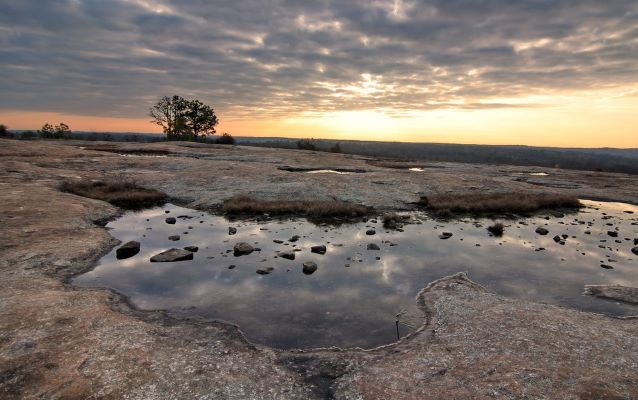Last updated: September 27, 2019
Place
Arabia Mountain National Heritage Area

William Bishop Photo
Quick Facts
Location:
Georgia
Significance:
Dominated by massive granite outcrops – called “monadnocks” – the Arabia Mountain National Heritage Area encompasses over 400 million years of natural and human history in the Georgia Piedmont.
Designation:
National Heritage Area
MANAGED BY:
As well as agriculture, the quarry industry had a profound impact on the AMNHA. Quarries at and around Arabia Mountain extracted granite for construction and chicken feed well into the 20th century. Lithonia, meaning “city of stone” in Greek, grew into a bustling quarry town, with Lithonia granite sent off to build structures such as the U.S. Naval Academy in Annapolis, Maryland. The effects of the quarry industry remain visible at Arabia Mountain. Nearby Panola Mountain, meanwhile, was unfit for quarrying and today stands as a pristine National Natural Landmark.
Southeast of Panola lies the Monastery of the Holy Spirit, a community of Trappist monks founded in 1944. This site of peace and beauty includes a poured-concrete abbey and over 2,000 acres of greenspace. Connected to the rest of the AMNHA by the South River, the Monastery of the Holy Spirit provides a place for peace and reflection in the midst of 400 million years of history.
Natural and human, ancient and timeless, the AMNHA captures a complex and vibrant part of the American story.
This Heritage Area includes the following sites:
- Historic Downtown Lithonia
- Historic Vaughters’ Farm (part of Panola Mountain State Park)
- Historic Lyon Farmhouse (a part of the former agricultural community of Flat Rock)
- Flat Rock Archives (located in the historic T.A. Bryant, Sr. Homestead)
- Flat Rock Cemetery (a part of the former agricultural community of Flat Rock)
- Davidson-Arabia Mountain Nature Preserve
- Panola Mountain State Park
- Monastery of the Holy Spirit
- The Atlanta Wild Animal Rescue Effort (AWARE)
